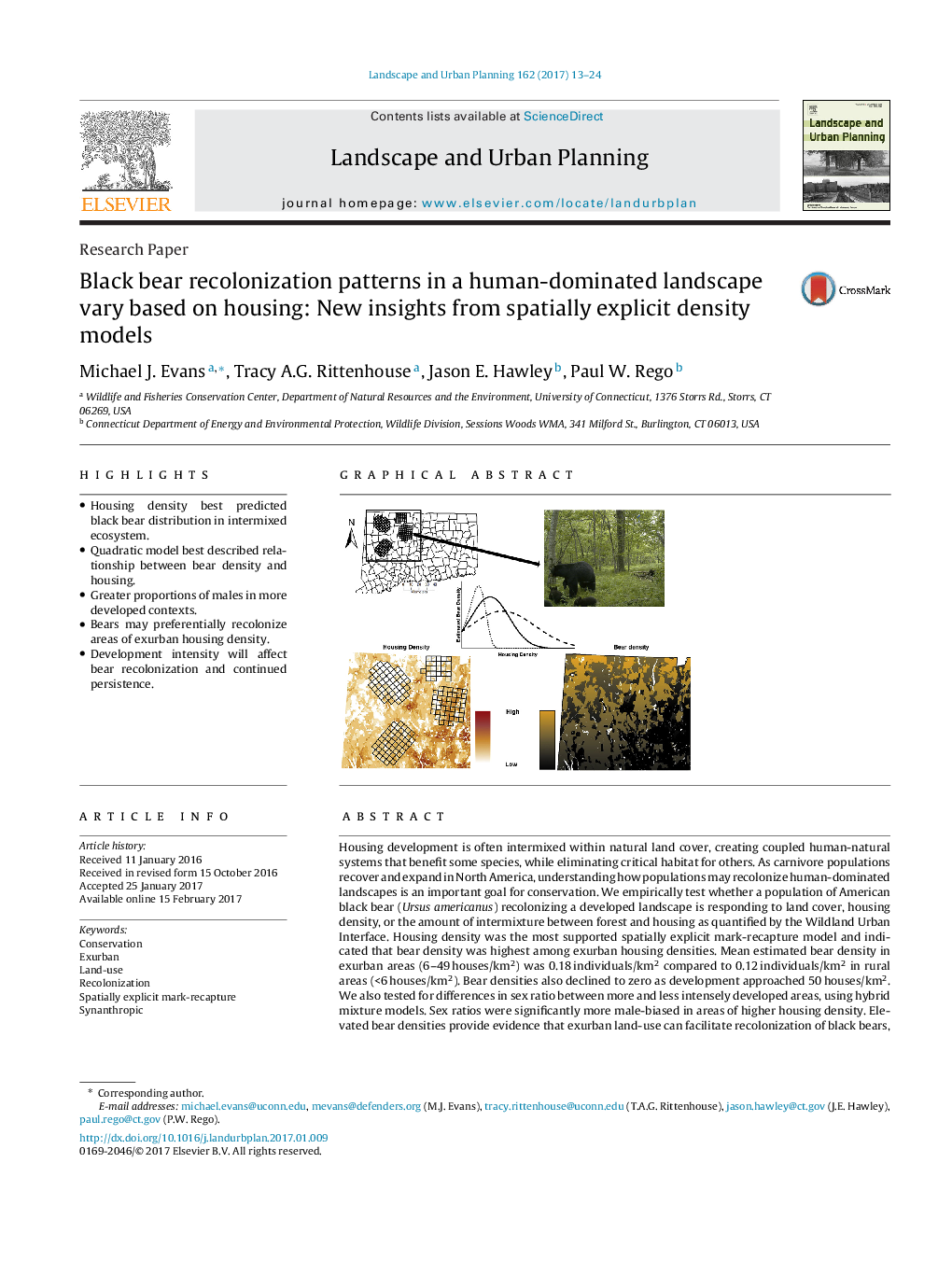| کد مقاله | کد نشریه | سال انتشار | مقاله انگلیسی | نسخه تمام متن |
|---|---|---|---|---|
| 5115041 | 1484596 | 2017 | 12 صفحه PDF | دانلود رایگان |
• Housing density best predicted black bear distribution in intermixed ecosystem.
• Quadratic model best described relationship between bear density and housing.
• Greater proportions of males in more developed contexts.
• Bears may preferentially recolonize areas of exurban housing density.
• Development intensity will affect bear recolonization and continued persistence.
Housing development is often intermixed within natural land cover, creating coupled human-natural systems that benefit some species, while eliminating critical habitat for others. As carnivore populations recover and expand in North America, understanding how populations may recolonize human-dominated landscapes is an important goal for conservation. We empirically test whether a population of American black bear (Ursus americanus) recolonizing a developed landscape is responding to land cover, housing density, or the amount of intermixture between forest and housing as quantified by the Wildland Urban Interface. Housing density was the most supported spatially explicit mark-recapture model and indicated that bear density was highest among exurban housing densities. Mean estimated bear density in exurban areas (6–49 houses/km2) was 0.18 individuals/km2 compared to 0.12 individuals/km2 in rural areas (<6 houses/km2). Bear densities also declined to zero as development approached 50 houses/km2. We also tested for differences in sex ratio between more and less intensely developed areas, using hybrid mixture models. Sex ratios were significantly more male-biased in areas of higher housing density. Elevated bear densities provide evidence that exurban land-use can facilitate recolonization of black bears, yet high housing density may also limit the recovery of bear populations. Explicit relationships between land-use and bear density will allow managers to anticipate future population distribution, and areas where bears and people may come into frequent contact.
Figure optionsDownload high-quality image (325 K)Download as PowerPoint slide
Journal: Landscape and Urban Planning - Volume 162, June 2017, Pages 13–24
